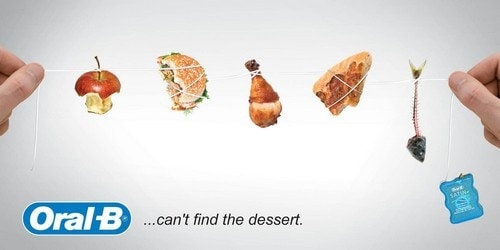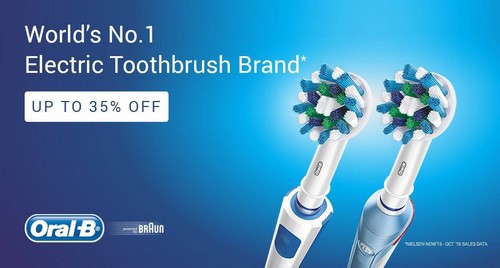The Marketing mix of Oral-B analyses the 4Ps of Oral-B, including the Product, Price, Place, and Promotions. Oral-B is associated with the FMCG industry as it deals with oral hygiene products. It has been a subsidiary of its parent company, Procter & Gamble, since 2006 and was earlier owned by the Gillette Company. The brand was introduced in 1950 by its founder dentist, Dr Robert Hutson. It faces competition from brands like
- Pepsodent
- Colgate
- Close-up
- Philips Oral Healthcare
- Johnson & Johnson
About Oral-B
- Type: Oral hygiene products
- Industry: Oral health and personal care
- Founded: 1950
- Founder: Dr. Robert Hutson
- Headquarters: Belmont, Massachusetts, United States
- Area served: Worldwide
- Key people: Richard R. Braun, Chairman, and John A. Pepper, CEO
- Number of employees: 10,000+
Table of Contents
Oral-B Product Strategy
Oral-B, a renowned brand in the oral hygiene industry, offers a wide range of dental hygiene products to promote oral health.
The new Product Mix of Oral-B in 2023 is as follows (Source).
- Manual Toothbrushes: Oral-B offers a variety of manual toothbrushes for adults and children, featuring different bristle types, head sizes, and handle designs to cater to diverse needs and preferences.
- Electric Toothbrushes: The brand is well-known for its range of electric toothbrushes, which include features like rotating-oscillating or sonic technology, multiple brushing modes, pressure sensors, and timers.
- Toothpaste: Oral-B produces toothpaste for various oral health concerns, including cavity protection, gum health, whitening, sensitivity, and enamel protection. These toothpastes often include specialized ingredients to target specific dental issues.
- Dental Floss: Oral-B caters to different flossing preferences by offering various dental floss products. This includes traditional floss, floss picks, and interdental brushes.
- Mouthwash: Oral-B’s range of mouthwashes complements toothbrushes and toothpaste, targeting issues like plaque, gingivitis, bad breath, and teeth whitening.
- Toothbrush Heads: For electric toothbrush users, Oral-B provides a range of replaceable brush heads, each designed for specific cleaning actions, such as deep cleaning, sensitive gums, or whitening.
- Orthodontic Products: Oral-B offers specialized products like ortho brushes and flossers for individuals with braces or other orthodontic appliances.
- Professional Dental Care Products: Oral-B also produces products for professional use in dental offices, including specialized toothbrushes and oral care tools.
- Travel-sized Products: The brand offers travel-sized oral care products that are convenient for users on the go.
- Kids’ Oral Care Products: Oral-B has a line of products specifically designed for children, including fun designs, gentle bristles, and flavored toothpaste to encourage good oral hygiene habits from a young age.
Oral-B’s product mix is focused on providing comprehensive solutions for excellent oral care experience and health care, catering to a wide range of consumer needs, from daily oral hygiene to specific dental concerns. The brand’s emphasis on innovation, particularly in electric toothbrush technology, reinforces its position as a leader in the oral care market.
Oral-B Place Strategy
Oral-B started its journey from a small place in the United States and, with time, has spread its product presence to include most parts of the world. It is readily available in most countries in grocery stores, kirana stores, hypermarkets, supermarkets, malls, shopping centers, dentist’s clinics, and medication shops. It can also be purchased online as most e-shopping sites keep this popular product in their product kitty.
Oral-B has a robust distribution network and channel facilitates quick and easy distribution to all its outlets. The company also takes the help of its parent company to distribute its products in the consumer market. Oral-B distributes the product directly via its sales representatives or indirectly via independent distributors.
It also has tie-ups with sales personnel from other companies to market its products in the consumer market. The distributor is vital to Oral-B’s business strategies and distribution channel. He is the agent who actually carries out the transactions and Oral-B receives market intelligence, order processing, sales contact, and market coverage from him directly.
Oral-B’s place strategy is integral to its overall marketing and distribution approach, ensuring its oral care products are readily accessible to a wide range of consumers. Here’s a breakdown of Oral-B’s place distribution strategy:
- Wide Retail Distribution: Oral-B products are widely available in various retail outlets, including supermarkets, drugstores, and big-box retailers. This extensive retail presence ensures easy accessibility for consumers looking for oral care products during their regular shopping trips.
- Online Sales Platforms: Recognizing the growing trend of online shopping, Oral-B has a strong presence on e-commerce platforms. These include general online retailers like Amazon and specific healthcare product websites, allowing consumers to purchase Oral-B products from the convenience of their homes.
- Dental Professionals and Clinics: Oral-B collaborates with dental professionals and clinics, where their products are often recommended or sold directly. This serves as an endorsement from dental professionals and provides an additional sales channel.
- Global Market Reach: Oral-B’s products are available in numerous countries worldwide, catering to different regional markets with specific oral health needs and preferences. This global reach is crucial for maintaining the brand’s position as a leader in oral care.
- Specialized and Seasonal Placements: Oral-B often engages in specialized product placement strategies in retail stores, like endcap displays or promotional stands during specific health-related events or seasons (e.g., National Oral Health Month). These placements increase product visibility and consumer awareness.
Oral-B’s place strategy, characterized by its extensive retail and online presence, collaboration with dental professionals, global reach, and strategic in-store placements, ensures its products and services are widely accessible and visible to a diverse customer base. This strategy supports Oral-B’s goal of being a worldwide go-to brand for oral health care products.
Oral-B Pricing Strategy
Oral-B has targeted society’s middle and upper-middle class as its target customers, looking for innovative and qualitative products. They are looking for a change from the age-old products in the market. Oral-B has positioned itself as a global leader in the toothbrush market and the first choice of any dentist.
Oral-B has adopted a skimming pricing policy for its products. It has launched some inventive product items and does not have that many competitors at the onset. The company now adopts premium prices and books a profit by quickly selling its innovative and newly launched products.
Later, when other brands launch similar-sounding products, it adopts a competitive pricing strategy to tackle its competitors. It drops its prices through discounts, offers, and incentives to keep its product prices at par with the prices set up by its rival brands. This helps maintain its customer base and allows customers to make more sales and, ultimately, more profits.
Oral-B employs a comprehensive pricing strategy to maintain its competitive edge and appeal to a diverse consumer base. Here’s an analysis of Oral-B’s pricing strategy:
- Competitive Pricing: Oral-B sets its prices in a way that is competitive with other brands in the oral care market. This approach ensures that their products are attractively priced for consumers, balancing quality and affordability, especially in the manual toothbrush and basic dental care segments.
- Premium Pricing for Electric Toothbrushes: Oral-B adopts a premium pricing strategy for its electric toothbrush range. These products, known for their advanced technology and features, are priced higher, reflecting their added value and innovation. This segment caters to consumers looking for a more advanced oral care solution.
- Product Line Pricing: Oral-B uses product line pricing, where different products within the same category are priced differently based on features and benefits. For instance, basic manual toothbrushes are more affordable, while specialized toothbrushes with added features are priced higher.
- Psychological Pricing: Oral-B often employs psychological pricing tactics, such as pricing products just below a round number (e.g., $19.99 instead of $20). This strategy makes prices appear more attractive to consumers, potentially increasing sales.
- Promotional and Discount Pricing: Oral-B engages in promotional pricing, offering discounts, bundle deals, and special offers during certain periods, like dental health months or major shopping holidays. This strategy helps attract price-sensitive customers and boost sales volumes.
- Segmented Pricing Strategy: Oral-B’s pricing varies across different geographical markets. In countries with higher purchasing power, prices might be higher, reflecting the market’s ability to pay more for premium products. Conversely, Oral-B might adopt a more competitive pricing approach in more price-sensitive markets.
- Value-Based Pricing for Innovations: Oral-B often uses value-based pricing when introducing new, innovative products. The price reflects the innovative features and perceived value of the product, appealing to consumers looking for the latest advancements in oral care.
In summary, Oral-B’s pricing strategy combines competitive, premium, and psychological pricing, complemented by promotional activities and segmented approaches. This strategy supports Oral-B’s diverse product range and distribution channels, catering to consumer segments, from those seeking basic oral care to those looking for high-end, technologically advanced products.
Oral-B Promotion Strategy
Oral-B has adopted a bold strategy, including ATL and BTL marketing, to promote its products in the consumer market. It has launched several ad campaigns via print, digital and visual media in newspapers, magazines, hoardings, television channels, radio and billboards.
Oral-B also uses social media platforms to advertise and contact its customers. It offers dental care information to interested customers via its site. The company also interacts via its Facebook page, YouTube, and Twitter accounts. Offers, incentives and discounts are also mentioned on its website so that customers can avail themselves of latest offerings. It has used the tagline the brand more dentists use themselves worldwide, to describe its brand to perfection.
The company realizes the importance of celebrity endorsements and has roped in several famous personalities to become its brand ambassadors and to act in its ad campaigns. In 2013, Shakira became the brand spokesperson. Delta Goodrem, Australian singer is the brand ambassador for Oral-B 3D white. In 2013, Madhuri Dixit, a famous Indian actor, interacted online with customers via #AskMadhuriwithOralB.
This was a publicity gimmick by Oral-B marketing team, and it paid off with huge success. It was one of the most innovative digital marketing campaigns and helped the brand in creating further brand visibility. The company has announced TV presenter Emma Willis as its brand ambassador for promoting Oral-B’s power brushes. She will appear in several campaigns as part of the brand’s promotional activity.
Some Recent Video ads and Print ads for Oral-B are:
Liked this post? Check out the complete series on Marketing Mix


I just wanted to comment that I love the oral-b commercial with the pretty Ashley Bryant!
Does this company use signs on vehicles. If it does can you tell me the name of advertiser. I have a check here that is supposed to be for magnetic signs to be put on a vehicle. Is it a scam or not.